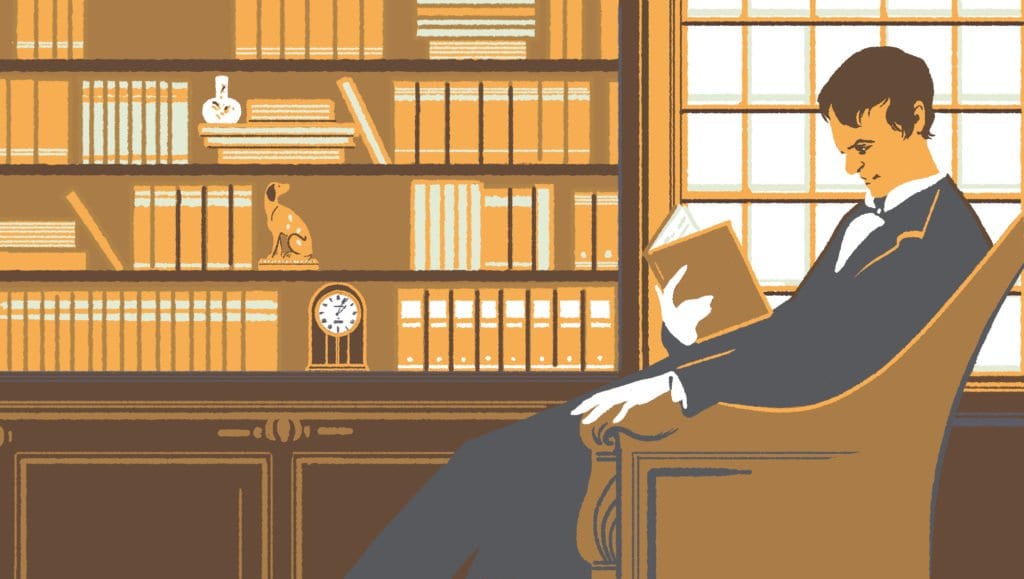Dr James Barry was a visionary medical reformist and a transgender man. That would be my thesis if I wrote a book about the 19th-century army surgeon.
I covered Barry at length in one of our early columns, and was immediately interested: Dr James Miranda Barry was born sometime around 1789 and was what we would now classify as someone assigned female at birth.
For reasons that aren’t recorded or clear, a fiercely intelligent young man named James Barry matriculated at the University of Edinburgh’s prestigious medical program in 1809, eventually specializing in practical anatomy and midwifery.
Barry joined the British army’s medical services and throughout his career was stationed in the United Kingdom, South Africa and the island of St Helena. He also held various posts in the West Indies and, briefly, Montreal.
His military career was fraught with controversy: he was a fiery tempered, difficult man — but he was something of a visionary reformist and doctor. He cared deeply about the treatment of prisoners and lepers before medical reforms really took hold in the British Empire, and he performed the first caesarean-section in the English-speaking world where both the mother and child lived.
Not all his biographers share the admittedly modern sentiment that he was a man. In 1958, almost a hundred years after his death, Scottish journalist Isobel Rae published the first “factual biography” titled, tellingly, The Strange Story of Dr James Barry: Army Surgeon, Inspector General of Hospitals, discovered on death to be a woman.
Previous stories about Barry were based on gossip, speculation and a scant few contemporary news stories, all of which assumed he was a “temperamental, hysterical girl of high degree, who joined the Army Medical Service for love of an army surgeon,” says Rae in her book. Unlike previous writers, the 20th-century journalist was given access to the “Barry Papers” by the War Office.
“All my predecessors believed that the ‘Barry Papers’ contained a post-mortem report which would definitely establish Barry’s female sex, but this is not so,” Rae writes. “What they do contain is the statement of the charwoman who prepared Barry’s body for burial.”
Before his death, caused by “an epidemic of diarrhoea,” Barry requested no post-mortem examination take place, and that he was to be buried in the clothes he died in. His requests were apparently ignored. This charwoman gave testimony that Barry was “a perfect female” who had “had a child when very young,” which Rae accepts as “the final answer.” Rae even uses feminine pronouns throughout, which makes the story a jarring read.
Throughout The Strange Story of Dr James Barry, Rae includes posthumous writings of Barry’s contemporaries. Some claim they knew he was a woman all along, although Rae questions the fact that this knowledge came after the public revelation and scandal following his death.
Others wrote that they would have never been able to tell. The focus of Rae’s book is on wringing out every iota of fact she could find about Barry, without reexamining history’s conclusion: that Barry was definitely a woman.
A correspondence included in the Barry papers by “RA,” who was a young girl when she met the doctor, describes “a small, irritable man, I can still see his tiny hands. He had a pale, almost ashen countenance, with aquiline features, pinched and wizened, and crowned with an unmistakeable flaxen wig . . . He spoke in a squeaky, querulous voice both well and wittily, and his constant companion was a small white dog, almost as cross as his master.”
A number of other contemporaries saw no major gender incongruity with the androgynous, short doctor.
In 1895, a person who signed their name as “Captain” wrote to The Lancet, a famous medical journal still in existence. They described a run-in with Barry later in the doctor’s life. “He was in the full dress of an army surgeon, but had all the appearance of being a woman.”
Captain was told this was Dr Barry, and that the “general belief was that he was a hermaphrodite and as such escaped much comment or observation in places where everyone was used to him.”
However, Captain, like the charwoman attending to Barry’s corpse, was convinced he was a woman, but the doctor attending to Barry’s body upon his death in 1865 was of the impression, as well “that Dr Barry was a Hermaphrodite,” and gave testimony as such when called.
Regardless, Rae concludes: “Poor Dr Barry! Her last wishes had been disregarded and the secret of her sex revealed, but the mystery of her birth — and of her child,” since the charwoman believed Barry had marks revealing him to have carried, “went with her to her grave in Kensal Green.”
As I was reading Rae’s biography, I couldn’t help but wonder: why was it so hard to believe Dr James Barry was simply a man? A transgender man, in modern understanding.
History, after all, is replete with gender variant people, some we might, today, classify as transgender. A contemporary to Rae’s, Christine Jorgensen made international headlines in 1952 as the infamous “Ex-GI Becomes Blonde Beauty,” and was given the sensational title as “the first transexual.”
Even before Jorgensen, the United Kingdom had Mark Weston, an accomplished 1920s women’s field athlete who transitioned and married. Or consider the relative infamy of Chevalier d’Éon, Mary Jones or Stella and Fanny, to name a few gender deviants historically or contemporary to James Barry. All this to say, transsexual people weren’t out of the realm of imagination in the 1950s.
If we take Rae’s conclusion as the answer then Barry was a woman who lived almost her entire life as a man; a doctor with a long and notable career. Rae offers no motive for “her” doing so, other than the fact that she could.
History is as much about presenting fact as it is interpreting it through a modern understanding. That’s why I have no problem proudly proclaiming my own thesis: Dr James Barry was a short, cantankerous, fiercely intellectual, epicene, transgender man.


 Why you can trust Xtra
Why you can trust Xtra


